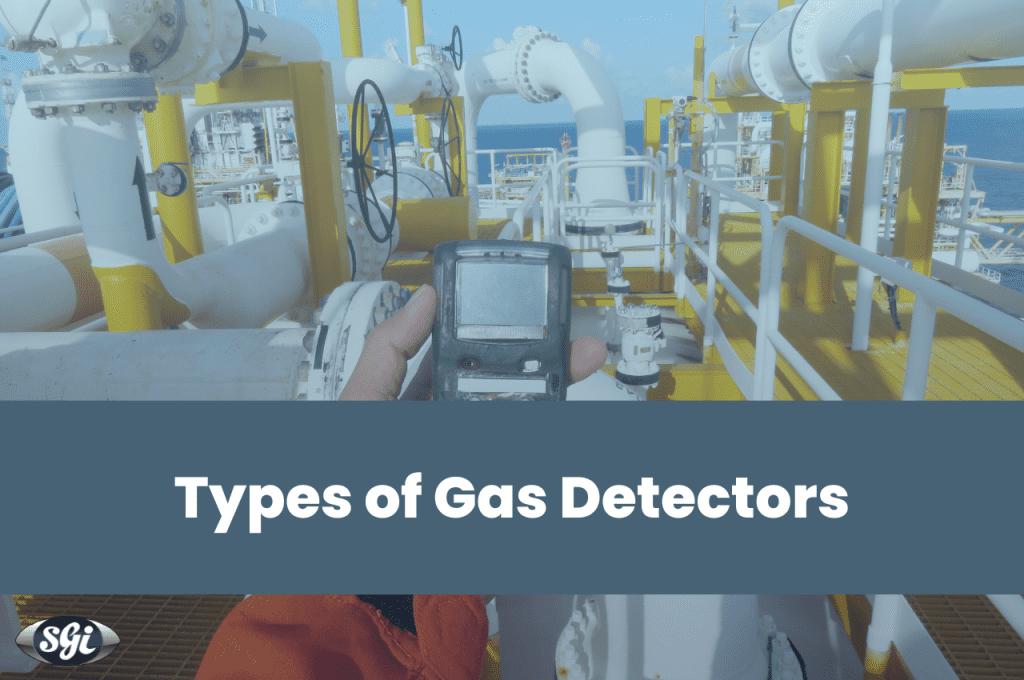
What is a gas detector?
A gas detector as the name suggests, helps detect gases in the environment where it is installed, specifically used to identify toxic gases, gas leaks, and a drop in oxygen. Many industries that work with toxic gases and in natural reserve industries such as mining, oil rigs, etc. The machine is built to maintain safety measures and alert individuals in threatening situations such as those mentioned before. Since the use cases are varied and dangerous, there are multiple technologies in the market for gas detection.
Types of gas detectors
Electrochemical: The electrochemical gas detector has an outer membrane that allows gases to permeate. These gases then reach the electrode, housed within the gas detector, that either leads to oxidation or reduction, depending on the type of gas that reaches it. If the gas is oxidized, a current flow is initiated from the working electrode to the counter electrode within the detector and in case of reduction, the flow reverses. The current that flows is proportional to the concentration of the gas. This reading is then processed according to the calibration and displayed to the user. These detectors best help detect hazardous gases or concentration drops and increase of certain essential gases in an enclosed environment.
Catalytic bead or Pellister: The catalytic bead gas detector is used to detect combustible gases. The detector houses two beads - one inert and another coated in a chemical catalyst which are simultaneously heated and the temperature difference the beads is taken into account to detect the concentration of combustible gases. The detector helps identify gases that maybe present in concentrations surpassing the lower explosion limits. While the detectors are compatible for detecting a wide range of flammable gases, including hydrogen, methane, butane, propane, and carbon monoxide, it is susceptible to poisoning when exposed to high concentrations of certain gases. The gas detector works best when calibrated to a single gas.
Photoionization: Photoionization detectors a.k.a. PIDs use high energy UV photons to ionize chemicals in the sample gases to detect gas and vapor analytes. The detector has a UV lamp that ionizes the compounds and emits electrons leading to formation of charged ions that are proportionate to the concentration of the gas compound. These detectors are highly-efficient, easy-to-use, and generally available as hand-held devices. The detector helps identify the concentration of a wide variety of gas compounds such as alkyl iodides; olefins, sulfur compounds, Alcohols, Alkanes, and more.
Point/ Non-dispersive infrared: The infrared (IR) point or Non-dispursive IR detectors utilize wavelengths to detect gas concentrations in the sample gas. The difference between the energies in the wavelength that absorbs the gas and the reference wavelength that does not, is proportional to the concentrations of the gas. These detectors are helpful in detecting hydrocarbons and other infrared active gases. These are generally found in areas where explosion risks are high and large spaces need to be monitored.
Infrared imaging: As the name suggests, the infrared imaging gas detectors rely on back-scattered light on the absorption wavelength to identify gas compounds. The technology is similar to the IR point detectors, although these are highly useful in locating gas-leak sources and in actively monitoring large spaces.
Semiconductor: Semiconductor gas detectors use sensors that initiate a chemical reaction when it comes in contact with the monitored gases. This chemical reaction is then measured and the reading is shared with the user. The detector is generally used to detect different gases including the highly hazardous carbon monoxide.
Ultrasonic: These detectors do not directly detect gases or their concentrations in the environment, but rather use ultrasonic technology to identify sounds that any high pressure gas leaking into the environment creates. The detector can measure and monitor the leak rate of the gas depending on the information it gathers. These are commonly found in open outdoor areas such as power plants, gas platforms, or facilities that use large gas storage tanks or pipelines for gas transportation. Due to its dependency on the acoustic and not the gas concentration, there is no limitation in the gases that it can help detect.All of these gas detectors have a shelf life and need to be serviced at frequent intervals to ensure that their ability to detect harmful gases has not been compromised. Calibration testing for gas detectors is a professional service that operators around the world carry out using specifically designed and equipped calibration kits. SGI's range of certified valves and accessories are built to equip your team with the best in the industry, because safety is always our priority. Checkout our range of products here.